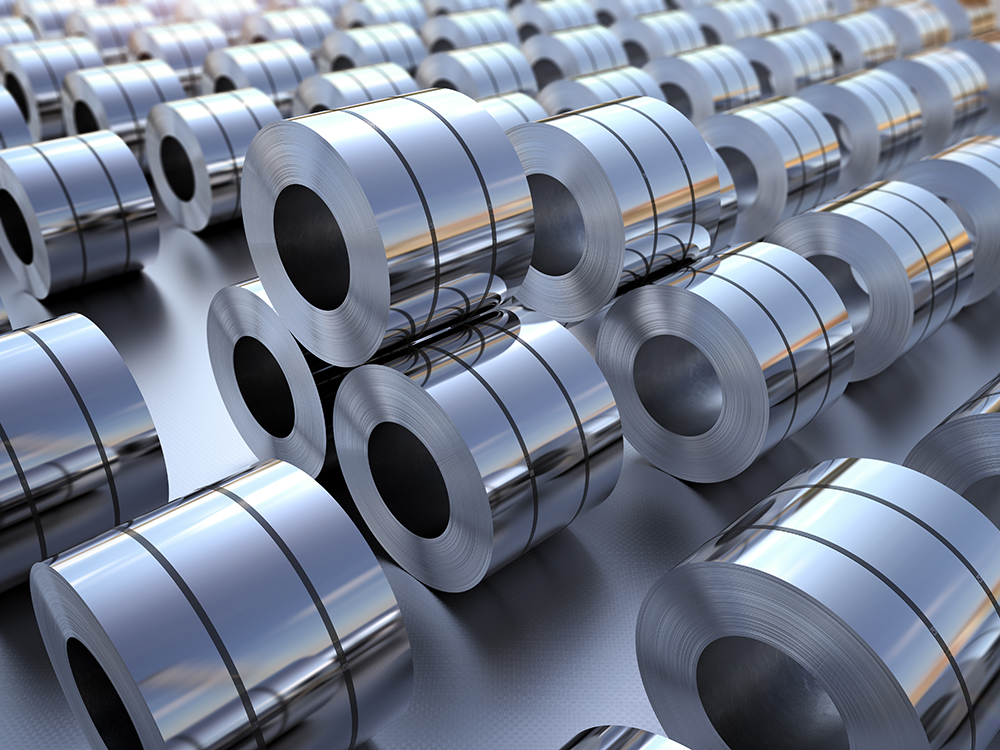Raw Steels MMI: How Far Will Steel Prices Fall?

The Raw Steels Monthly Metals Index (MMI) traded down during the month. Overall, the index fell 3.82% from April to May. While U.S. steel prices moved sideways throughout April, the bias appeared increasingly to the downside as buyers pulled away from the market due to tariffs.
Steel Prices Slide Lower As Bearish Signals Mount
After finding a peak at the end of March, U.S. steel prices have started to slowly unravel tariff-induced gains that began around the start of the year. While the trend remains sideways, the bias appears distinctly to the downside, with no evidence of meaningful upside momentum. Since hitting their peak, hot rolled coil prices have fallen nearly 2%. Although declines have proven marginal since late March, they appear likely to continue as bearish market signals accumulate.
Mill Lead Times
HRC mill lead times began to lengthen as buyers returned to the market ahead of tariffs. Lead times increased slightly over a week from the end of January to their peak in early March. However, since tariffs took effect, lead times began to contract.
By the end of April, they sat at 5.25 weeks. Until lead times stabilize, prices will likely drop in tandem as shorter lead times suggest an oversupplied market. CRC, HDG and plate mill lead times are available in MetalMiner’s Monthly Metal Outlook. Get a sample report here.
Domestic Output
While rising production levels can sometimes indicate a stronger market, in this case, it does not. According to data from the American Iron and Steel Institute, mills continue to increase output despite the apparent oversupply that has emerged since tariffs took effect.
While mills are likely expecting increased demand as tariffs deter buyers from offshore supply, rising output at a time when domestic demand has seemingly softened will invariably weigh on prices unless market conditions improve. Learn how to manage tariffs with MetalMiner’s free guide.
Layoffs
While output has risen overall, some facilities have become casualties of bearish conditions. Cleveland-Cliffs, which is particularly sensitive to the automotive industry, recently announced layoffs and reduced capacity at three more facilities. Cliffs will idle the mills in June for an unspecified period, citing “insufficient demand.” While this move will drag the rising domestic output, overall, it suggests a weaker market with little optimism from one of America’s largest producers. Keep track of the latest steel industry news and what that means for steel buyers.
Market Backwardation
The market shifted from contango to backwardation in late March, with HRC three-month futures dropping below spot prices for the first time since June. While futures are not necessarily reliable indicators of what level spot prices will eventually fall to, they are reliable leading indicators for when spot prices are likely to shift to the upside or the downside.
Market backwardation in the steel market typically means that spot prices will fall. Although HRC declines thus far have proven slow, the wide delta between futures and spot prices could see those declines accelerate in the coming months. MetalMiner covers these steel market developments in its free weekly newsletter. Futures have stabilized as of mid-April. However, that sideways trend may prove temporary should demand conditions weaken further.
Manufacturing Contraction
After a brief ascent into growth, the ISM Manufacturing PMI returned to contraction in March. Throughout April, the PMI contracted even further.
While certain sectors of the U.S. economy have proven resilient over the past few years, the U.S. manufacturing sector experienced a prolonged downturn, essentially maintaining a sub-50 reading from the ISM. This slowdown has not only had a negative impact on U.S. metal demand and prices, but will continue to do so.
So, How Far Will Steel Prices Fall?
Several factors will determine precisely how far steel prices will fall. The most bearish projections suggest the possibility of a recession in the U.S., which could expedite this process. However, others disagree as to whether or not this will occur.
Should demand continue to decline, steel mills will find it difficult to maintain price levels, even with the aid of tariffs. Thus far, tariffs have not entirely priced offshore material out of the market, which will continue to place a cap on domestic steel prices. Mills could mitigate this by significantly constraining output. However, as this has yet to occur, prices will likely continue to unwind their Q1 gains.
If the market follows the same trajectory as it did following the announcement of Section 232 tariffs in 2018, prices will spend the coming months trending lower until they eventually return to their pre-tariff range.
Biggest Moves for Raw Material and Steel Prices
- Chinese steel slab prices once again witnessed the only increase of the overall index, with a mere 0.3% increase to $515 per metric ton as of May 1.
- Meanwhile, LME primary three month steel scrap prices fell 6.61% to $339 per metric ton.
- Chinese coking coal prices witnessed a 7.16% drop to $131 per metric ton.
- U.S. shredded scrap prices declined by 8.89% to $420 per short ton.
- Korean steel scrap prices experienced the largest decline, falling 10.5% to $164 per metric ton.
MetalMiner steel should-cost models: Give your organization levers to pull for more price transparency, from service centers, producers and part suppliers. Explore these models here.
